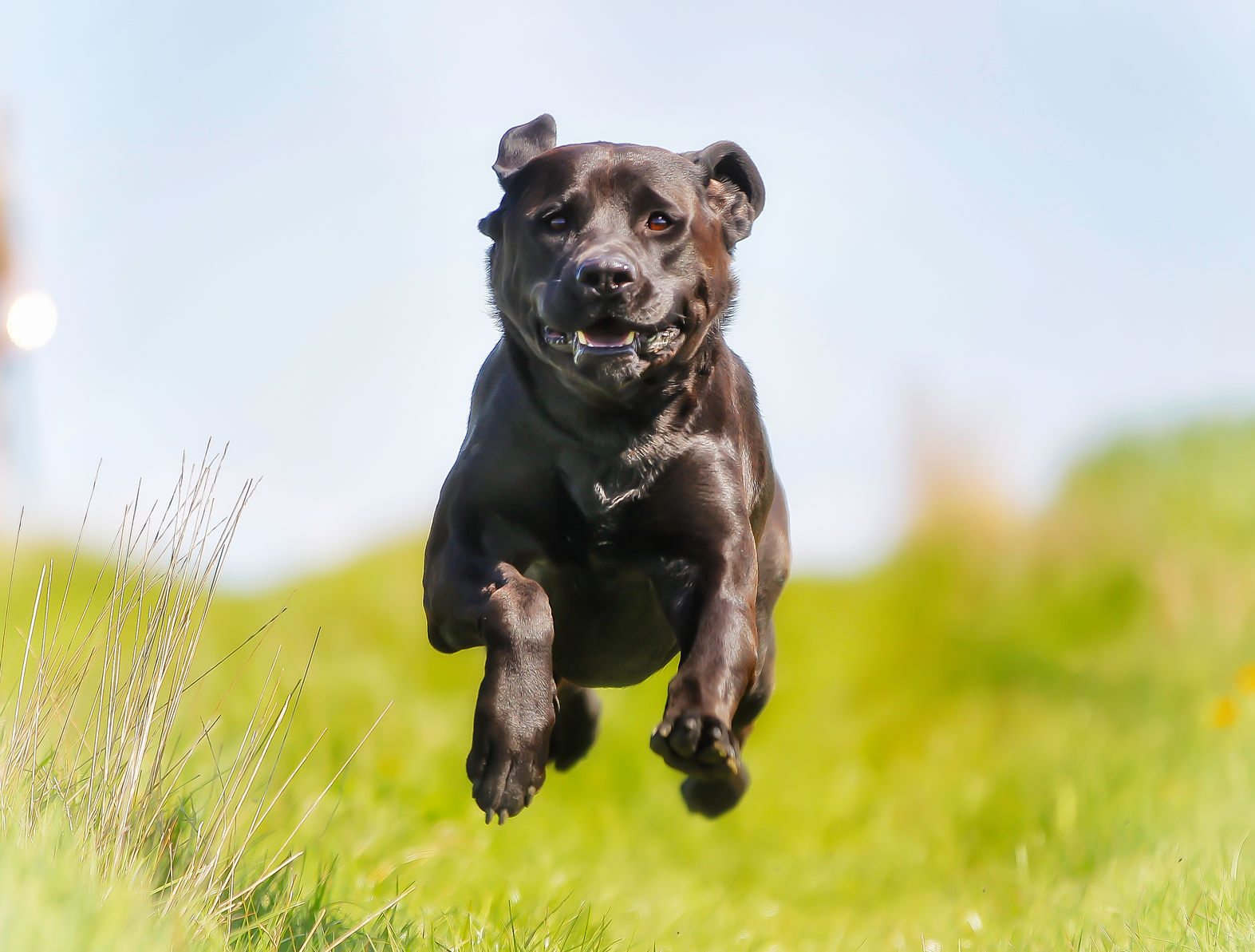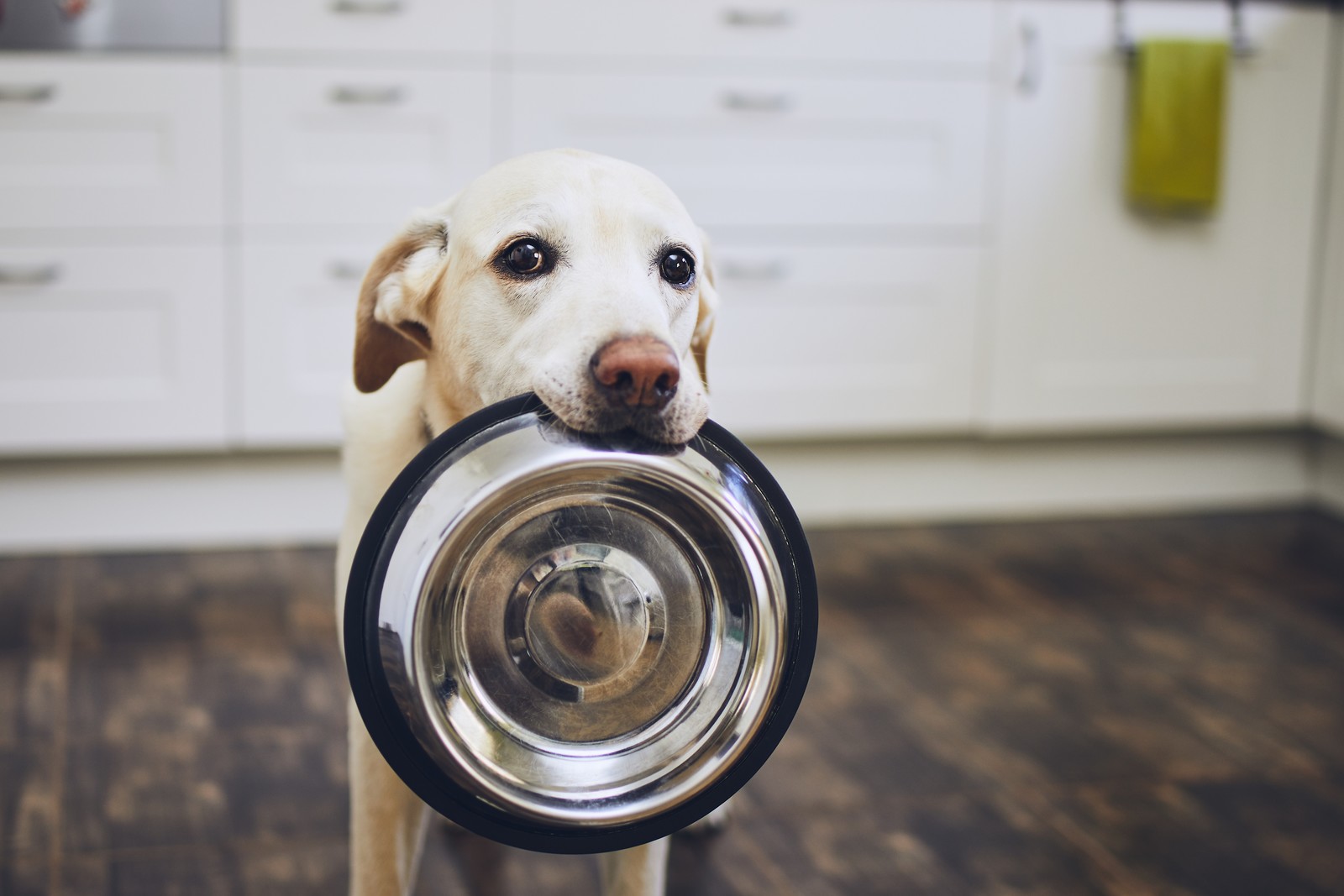by Leah Wickham
Labs are known and cherished for their playful nature. But, what if your Lab has so much energy you can’t keep up? If you notice your Lab displaying destructive or unruly behavior such as chewing things in the house or trying to escape, they may be signs your Lab is not receiving enough exercise. When you can’t possibly throw the ball for the hundredth time, below are a few tips and tricks on how to wear out your Lab, without wearing yourself out.
- Allocate 10 to 15 minutes three times a day outside with your Lab. Even if you only have a few minutes, your Lab will appreciate it. Breaking the time up incrementally helps make playtime more manageable and allows you to fit it into your busy schedule. Also, high-energy Labs regain their energy quickly, so multiple outings help spread out their exercise and prevent pent-up energy. Go for a walk, play fetch, or just enjoy time outside with your Lab.
- Spend at least one day a week doing something fun with your Lab outdoors. Go for a hike, walk along the beach, or go to a park. Even though high-energy Labs can regain their energy quickly, nothing compares to a busy day outdoors playing. A full day of exercise helps them release a high level of energy and will make the rest of the week more manageable.
- Make a point to socialize your Lab with other dogs and people on a regular basis. If your Lab plays well with children, high-energy kids make great playmates. Also, if you know you are going to be out of the house for a while, consider leaving your Lab with a friend, neighbor, or family member. This helps reduce the amount of time your Lab is left alone, especially if they are already alone while you are at work. Having others available to watch or play with your Lab is a great way of managing their energy while managing the rest of your life as well.
- Try bringing your Lab with you whenever you can. Even a trip to the gas station down the street can be exciting. Not only will this help get your Lab out of the house more often, it will also help them get used to the surrounding community.
- Use toys to encourage certain behavior. If your Lab is outside, a Frisbee or ball communicates that it is time to run and jump around. A bone or squeaky toy communicates that it’s time to play alone. It is also helpful to have fun toys like a tug-of-war rope designated for inside only. Not only does this help your Lab associate specific toys with a certain behavior, it also creates a variety of playful environments.
- Focus on an activity like fetch or agility training that you and your Lab can practice together. When you have a special activity to look forward to, you will be more likely to want to push yourself to exercise with your Lab when your energy is running low. If your physical ability is limited, consider choosing an activity that is highly physical for your Lab and more low-key for you.
Most of all have fun! You may discover a new hobby you love or a newfound energy you never knew you had. When you see the look of contentment on your Lab’s face at the end of the day, you’ll know you’ve got it right. Remember, you are deepening your relationship and creating an everlasting bond whenever you spend time with your Lab. Your Lab will thank you for it.







